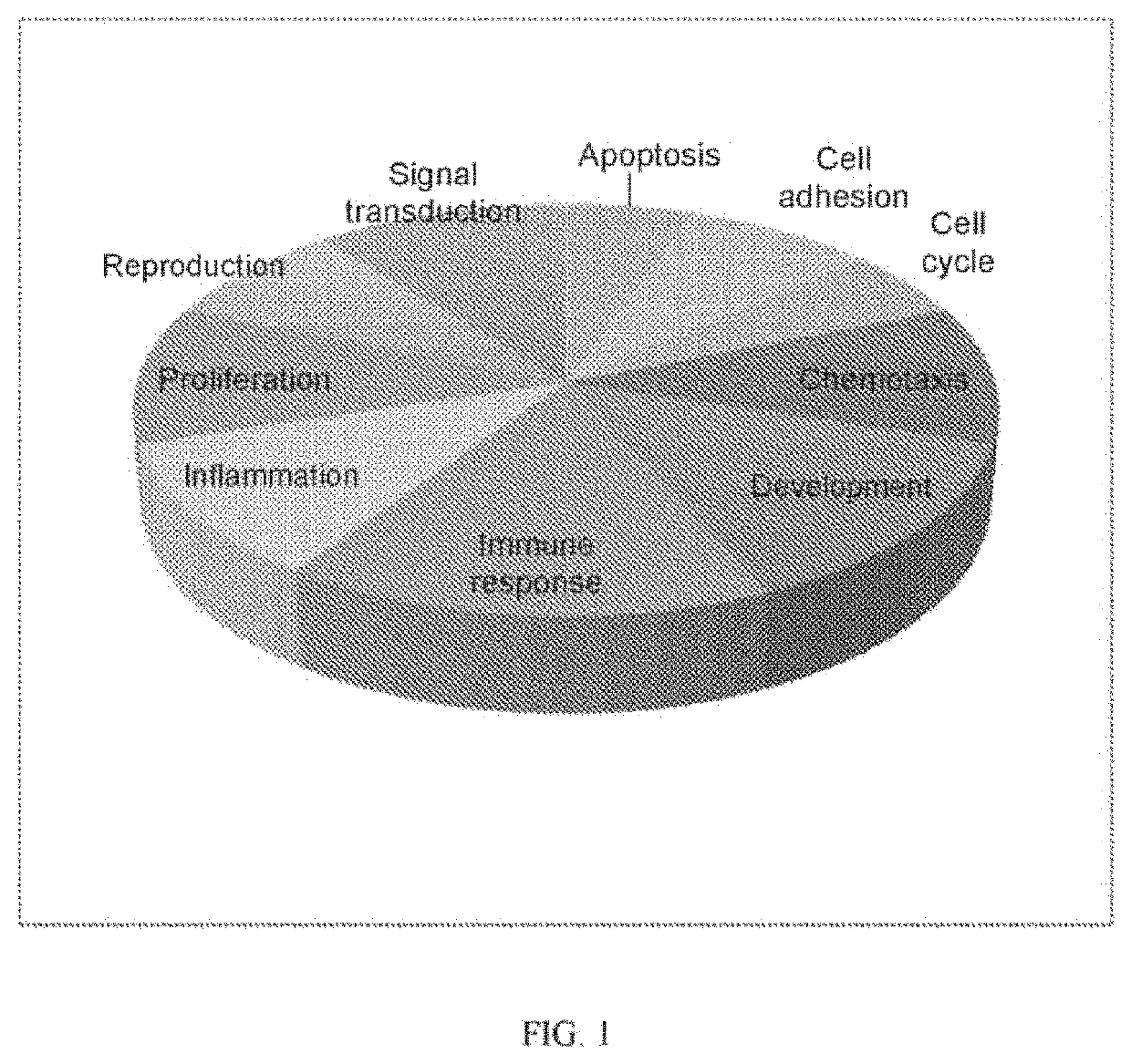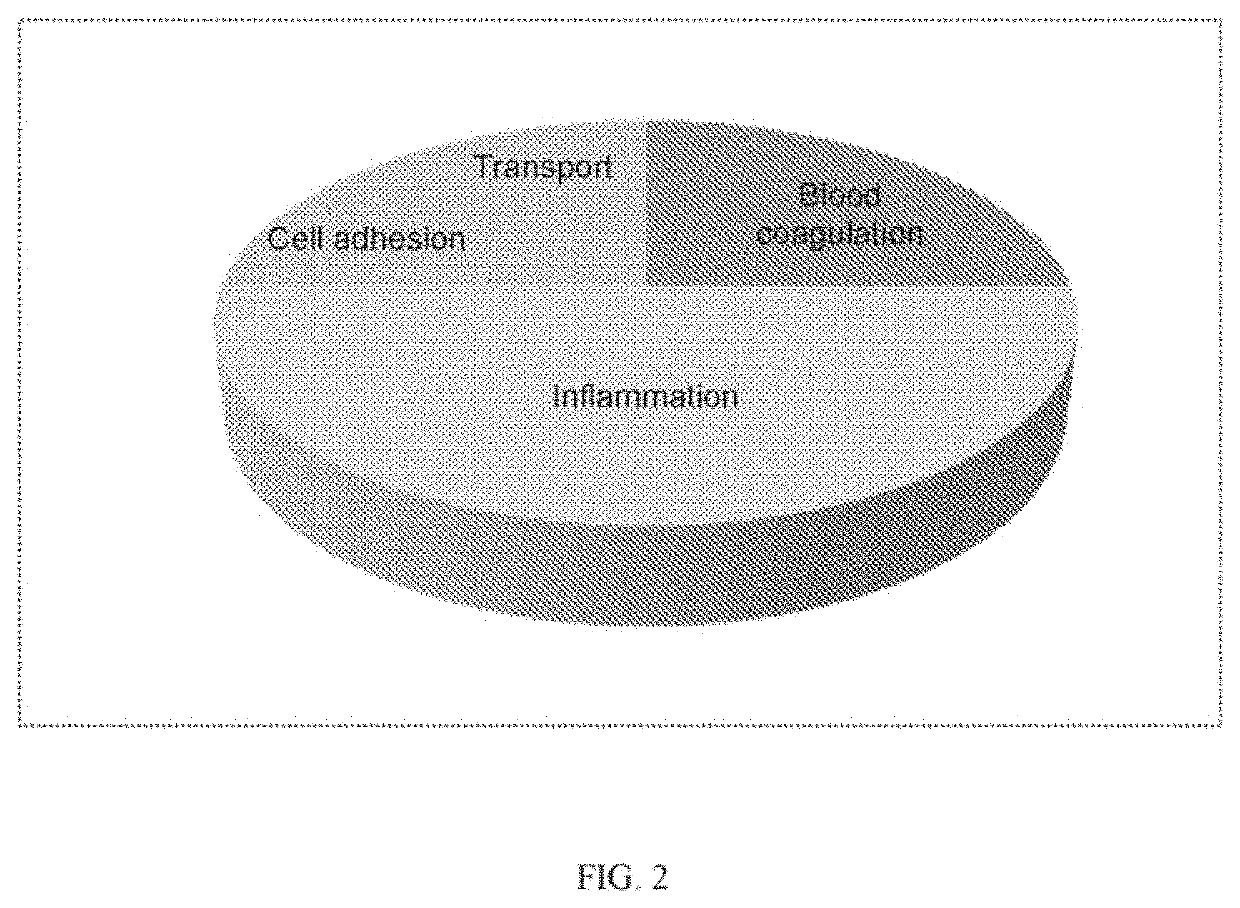Biomarkers for the detection of acute rejection in heart transplantation
a biomarker and heart technology, applied in the field of heart transplantation biomarkers, can solve the problems of rapid graft dysfunction and failure of tissue or organ, reproducibility and interpretation of biopsy results, and inability to detect acute rejection in heart transplantation,
- Summary
- Abstract
- Description
- Claims
- Application Information
AI Technical Summary
Benefits of technology
Problems solved by technology
Method used
Image
Examples
example 1
cid and Protein Markers for Diagnosing Transplant Rejection
[0130]The development of the biomarker panel in determining the acute rejection status of a patient involves three phases: a biomarker discovery phase, a biomarker replication phase, and an assay migration and validation phase. In the biomarker discovery phase: 65 heart transplant patients were recruited from a single site (Vancouver, Canada). Nucleic acid expression of over 36,000 nucleic acid markers were analyzed using Affymetrix microarrays, HTG EdgeSeq, and NanoString nCounter technology. Over 200 proteomic markers in plasma were analyzed using mass spectrometry and ELISA. Panels of nucleic acid markers or proteomic markers with an area under the receiver operating characteristics curve (AUC) above 0.8 were moved to the biomarker replication phase.
[0131]In the biomarker replication phase: 84 heart transplant patients were recruited from eight enrolling sites across Canada. Nucleic acid expression and proteomic expressio...
example 2
iomarker Performance on HTG mRNA Assay and ELISA
[0136]37 banked samples were used in the initial assay migration and validation phase study. 14 of them were previously diagnosed with acute rejection status (AR), and 23 with no rejection status (NR). The panel of 10 nucleic acid markers in Table 5 was assayed using the multiplex HTG mRNA assay and the panel of six proteomic markers in Table 4 were assayed using ELISA kits.
[0137]
TABLE 510 nucleic acid markers.HEBP1Heme binding protein 1ORM1 Orosomucoid 1 IL4R Interleukin 4 receptor CD44 CD44 molecule (Indian blood group) SERPING1 serpin peptidase inhibitor, clade G (C1 inhibitor), member 1 FCER1G Fc fragment of IgE, high affinity I, receptor for; gamma polypeptide C3 complement component 3 NFKB1 nuclear factor of kappa light polypeptide gene enhancer in B-cells 1 LTBR Lymphotoxin Beta Receptor BTK Bruton agammaglobulinemia tyrosine kinase
[0138]The results show that the assay, which employs a panel comprising the 10 nucleic acid marker...
example 3
iomarker Performance on Nanostring nCounter
[0140]A panel consisting of the 6 nucleic acid markers in Table 7 was tested in two different cohorts using the NanoString nCounter technology. The first is the recalibration cohort, in which the 6 nucleic acid marker panel was tested on samples from 38 subjects. 15 subjects had acute rejection and 23 had no rejection or moderate rejection to heart transplant. The second is the replication cohort, in which the panel of the 6 nucleic acid makers was tested on samples from 126 subjects, of which 22 had acute rejection and 104 had no rejection or moderate rejection.
[0141]The results (Table 8) show that the assay used in the recalibration cohort had a sensitivity of 100%, a specificity of 22%, a PPV of 5%, and a NPV of 100%. The assay used in the replication cohort had a sensitivity of 91%, a specificity of 15%, a PPV of 4%, and a NPV of 98%.
[0142]
TABLE 76 nucleic acid markers.Gene Symbol Gene nameHEBP1 Heme binding protein 1 CD 177 CD 177 mole...
PUM
| Property | Measurement | Unit |
|---|---|---|
| temperature | aaaaa | aaaaa |
| temperature | aaaaa | aaaaa |
| pH | aaaaa | aaaaa |
Abstract
Description
Claims
Application Information
 Login to View More
Login to View More - R&D
- Intellectual Property
- Life Sciences
- Materials
- Tech Scout
- Unparalleled Data Quality
- Higher Quality Content
- 60% Fewer Hallucinations
Browse by: Latest US Patents, China's latest patents, Technical Efficacy Thesaurus, Application Domain, Technology Topic, Popular Technical Reports.
© 2025 PatSnap. All rights reserved.Legal|Privacy policy|Modern Slavery Act Transparency Statement|Sitemap|About US| Contact US: help@patsnap.com


